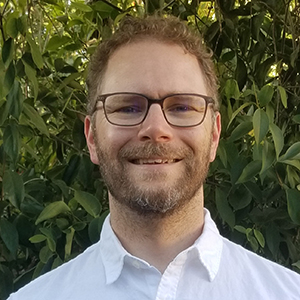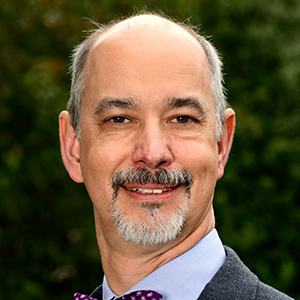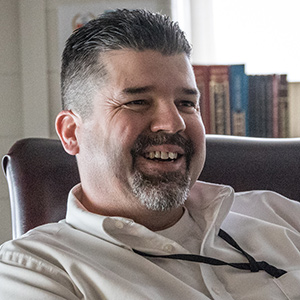People can experience a combination of environmental, chemical, and social stressors. Scientists met Oct. 7 at the annual meeting of the North Carolina Society of Toxicology (NCSOT) to discuss that interplay and share related research.
“[We will] highlight work in toxicology that gets at the complexity of our everyday exposures to better understand the risks to human health,” said Cynthia Rider, Ph.D., of the National Toxicology Program (NTP). She serves as NCSOT’s vice president.
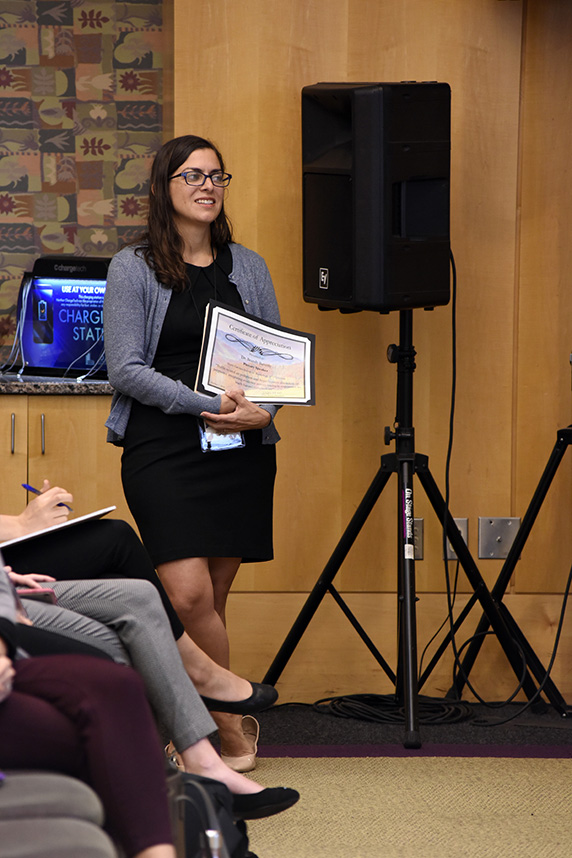 Rider was the lead organizer of NCSOT’s annual meeting. (Photo courtesy of Steve McCaw)
Rider was the lead organizer of NCSOT’s annual meeting. (Photo courtesy of Steve McCaw)Traffic-related air pollution
The conference, held at the U.S. Environmental Protection Agency (EPA) Research Triangle Park campus, featured a presentation by Brandy Beverly, Ph.D. She is a health scientist in NTP’s Office of Health Assessment and Translation.
Beverly discussed her effort to assess how different types of traffic-related air pollution may cumulatively contribute to hypertensive disorders — high blood pressure — in pregnant women. Those disorders can cause major negative health effects in women and their children.
“We are exposed to multiple chemicals from traffic air pollution, but when we conduct our assessments, we [toxicologists] typically only evaluate one chemical at a time. But it’s really the totality of those chemicals that we need to be concerned with,” she explained in an Environmental Factor interview.
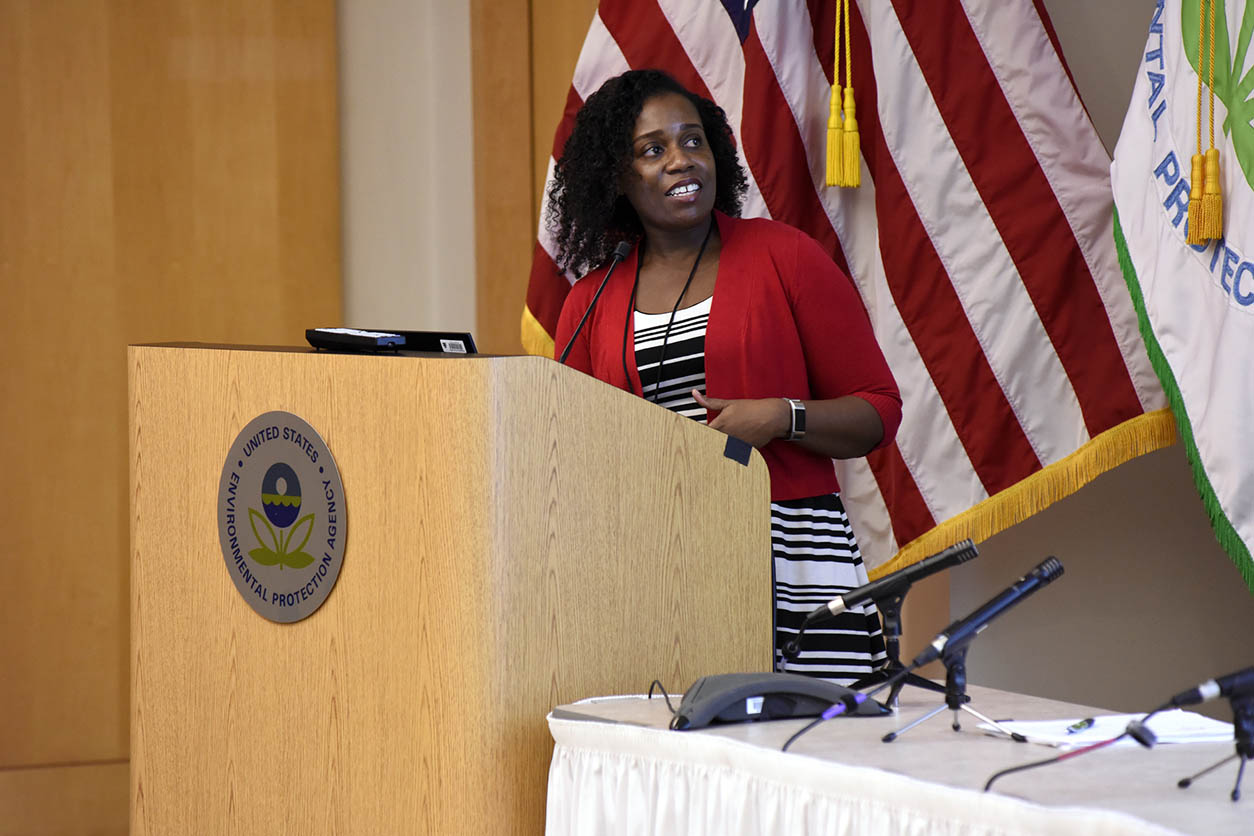 “We are interested in evaluating how chemicals that are relevant to people are affecting their health,” said Beverly. (Photo courtesy of Steve McCaw)
“We are interested in evaluating how chemicals that are relevant to people are affecting their health,” said Beverly. (Photo courtesy of Steve McCaw)To determine risk posed by exposure to multiple traffic pollutants, Beverly led a comprehensive review of studies related to substances such as particulate matter and nitrogen dioxide.
“If you have several chemicals that can cause the same outcome, then the more of those you have, there is more likely to be a health effect,” said Beverly. A final report with details of her team’s analysis will be released in December.
Others share their research
NIEHS grantee Jane Clougherty, Sc.D., of Drexel University, described her work on how social stressors combined with air pollution can in some populations increase problems such as asthma. She shared ways that researchers can integrate data on stress when studying the cumulative risk from multiple harmful agents or environmental hazards.
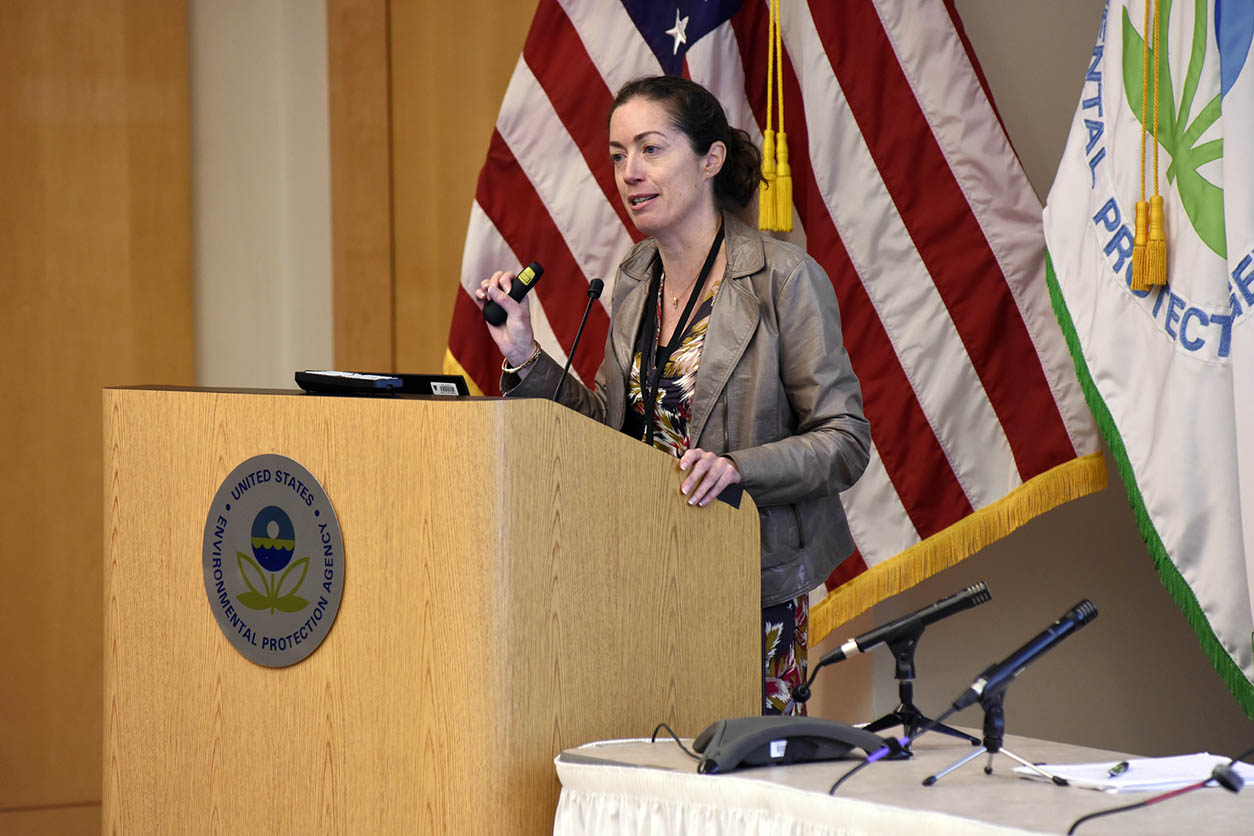 “Enormous amounts of evidence [link] ambient air pollution to respiratory outcomes, cardiovascular outcomes, and additional outcomes almost impacting every part of the human body,” said Clougherty. (Photo courtesy of Steve McCaw)
“Enormous amounts of evidence [link] ambient air pollution to respiratory outcomes, cardiovascular outcomes, and additional outcomes almost impacting every part of the human body,” said Clougherty. (Photo courtesy of Steve McCaw)“Chronic stress impacts health through many pathways — immune, endocrine, and metabolic function — and growing evidence is showing us that stress may increase our susceptibility to pollution as well,” she noted in an interview.
Another grantee, Julia Rager, Ph.D., of the University of North Carolina at Chapel Hill, talked about her work into how environmental factors may be increasing preeclampsia rates. That condition can cause, among other problems, issues related to placental growth and function.
Dustin Kapraun, Ph.D., an applied mathematician at EPA, discussed a data-mining technique he uses to identify prevalent chemical combinations in the U.S. population.
He said one common mixture is cadmium and lead. Kapraun added that going forward, he will work to learn more about combinations affecting specific groups, such as pregnant women.
Special recognition
NCSOT presented Linda Birnbaum, Ph.D., NIEHS Scientist Emeritus, with a lifetime achievement award.
The society’s president, Erin Hines, Ph.D., of EPA, spoke glowingly about Birnbaum’s contributions to environmental health science and toxicology.
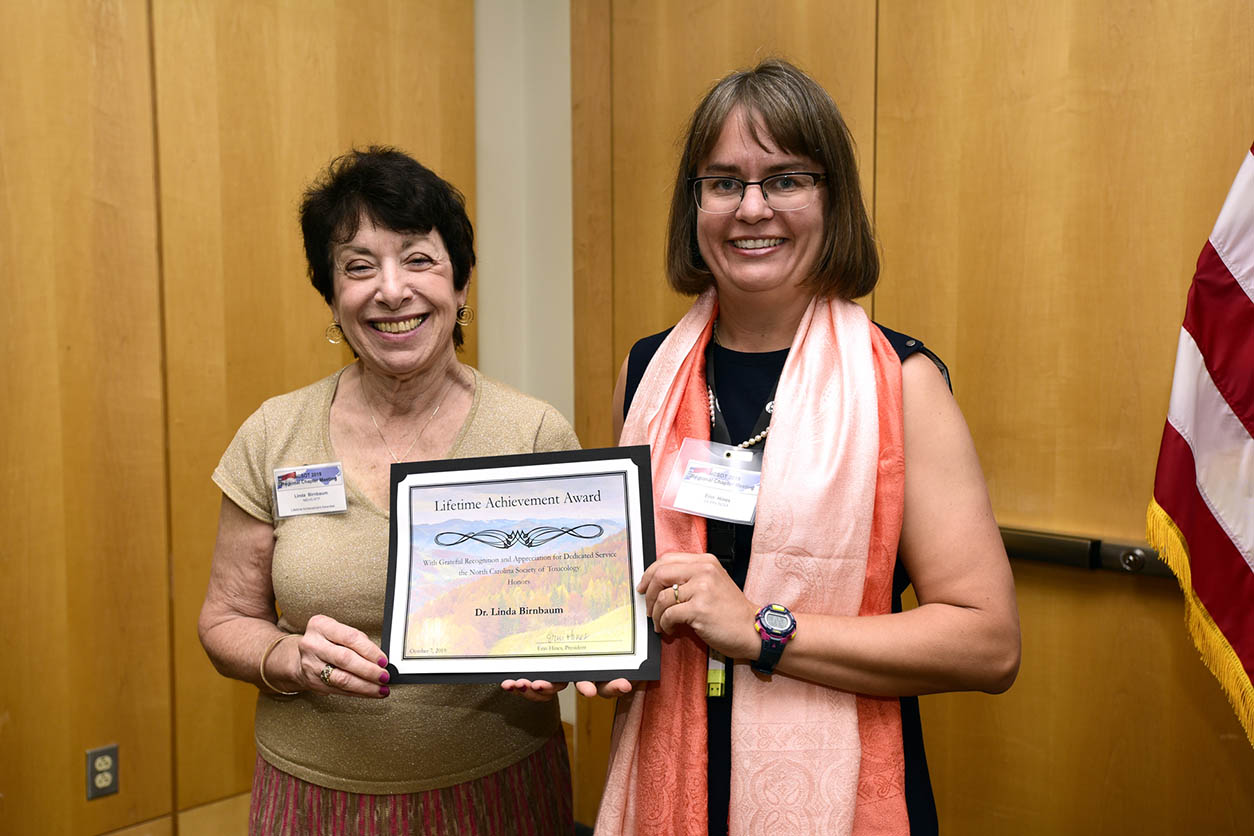 Hines, right, presented Birnbaum with the NCSOT Lifetime Achievement Award. (Photo courtesy of Steve McCaw)
Hines, right, presented Birnbaum with the NCSOT Lifetime Achievement Award. (Photo courtesy of Steve McCaw)Hines shared pictures of Birnbaum at various stages in her career, giving attendees a glimpse of her personality and many scientific accomplishments. She also showed a video of Birnbaum discussing mentorship and its role in her professional advancement.
(Jesse Saffron, J.D., is a technical writer-editor in the NIEHS Office of Communications and Public Liaison.)









